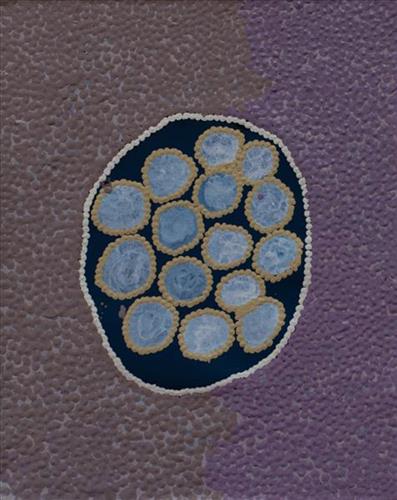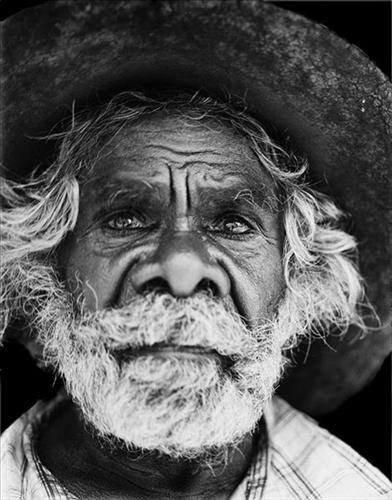111581969740
Wilarra
“Two Rockholes other side Punmu- Kayili (North) all the way keep going Kakarra (East), long way. Dingomili ngurra (Dingo’s home). Big one is Willarra. Dingos all stay in that place together, wild one [dingo] became a quiet one. All the dingos come from that place. Make a kuna (faeces), go home. Kirl Kirl (Well 36), Pinlankujarra and Karrarrngarri claypan are here too”
Wilarra, the site depicted in this painting, lies on the edge of a large salt lake, Nyayartakujarra (Lake Dora), near Punmu community. A distinctive group of small salt water pools are clustered together here. The water from these pools is known for its’ powerful healing properties, and the pools are still visited today by Martu to bathe cuts and sores.
Wilarra is also a term for ‘moon’ in Manyjillyjarra, and through the site’s jukurrpa (Dreamtime story), the site is united with the moon in significance. It is said that at Wilarra, the moon called to a family of dingoes; a mother, father and their large litter of dingo pups. The dingoes gathered at Wilarra, where the moon cared for them and created a windbreak for the family to shelter. “They scratched there in the salt lake and made those pools. They lay down there and had a sleep.” After a time, the dingoes continued travelling eastward toward the rising moon until they reached Kinyu (Well 35 on the Canning Stock Route), where they remained until all of the dingo pups had grown up. The moon asked the sun where it was going, and the sun replied it was also travelling east. From Kinyu the family travelled further east with the moon.




